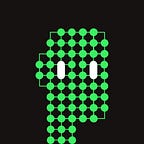All About NFTs: Exploring the Digital Collectibles Revolution
NFT, short for non-fungible token, represents a digital asset that encompasses a wide range of real-world objects, including art, music, videos, and even tweets. While NFTs share similarities with cryptocurrencies like Bitcoin and Ethereum, they possess unique characteristics that set them apart. Unlike fungible assets, such as physical money or cryptocurrencies, NFTs are distinct and cannot be exchanged on a one-to-one basis. Each NFT carries a digital signature that makes it one-of-a-kind, leading to their classification as non-fungible.
Physical money and cryptocurrencies are “fungible,” meaning they can be traded or exchanged for one another. They’re also equal in value—one dollar is always worth another dollar; one Bitcoin is always equal to another Bitcoin. NFTs are different. Each has a digital signature that makes it impossible for NFTs to be exchanged for or equal to one another (hence, non-fungible).
NFTs are typically held on the Ethereum blockchain, although other blockchains support them as well.
An NFT is created, or “minted” from digital objects that represent both tangible and intangible items, including:
- Art
- GIFs
- Videos and sports highlights
- Collectibles
- Virtual avatars and video game skins
- Designer sneakers
- Music
Even tweets count. Twitter co-founder Jack Dorsey sold his first ever tweet as an NFT for more than $2.9 million.
Essentially, NFTs are like physical collector’s items, only digital. So, instead of getting an actual oil painting to hang on the wall, the buyer gets a digital file instead.
NFT’s value is based entirely on what someone else is willing to pay for it. Investing in NFTs is a largely personal decision. If you have money to spare, it may be worth considering, especially if a piece holds meaning for you.
Here are some of the most expensive NFTs ever sold:
“The Merge” by Pak — $91.8M
The Merge officially became the most expensive NFT ever sold on December 2, 2021, with almost 30,000 collectors pitching together for a total cost of $91.8m.
“Everydays: The First 500 Days” by Beeple — $69.3M
Beeple’s artwork is so high-tier and highly respected within the community, and this piece is essentially a collage of 5000 pieces of his work. Starting from 2007, he pledged to create one piece of art every day, and that is the result.
Cryptopunks
CryptoPunks are among the earliest examples of NFTs on the Ethereum blockchain. Originally comprising 10,000 unique characters, they were quickly claimed once they appeared on the blockchain and offered for free to anybody with an Ethereum wallet. They can now only be purchased via marketplace, and the total value of sales thus far has reached an astonishing 645,180 ETH or $1.91 billion.
Some NFT terms you need to know:
FLOOR
The ‘floor’ or ‘floor price’ of a project is simply the lowest price at which you can buy an NFT from that project on the secondary market. It’s the most popular metric for tracking a project’s performance over time and its relative success compared to others.
GAS
The price for making a transaction on a blockchain is called ‘gas’. When buying NFTs on a blockchain like Solana, gas is negligible. On Ethereum, however, a $50 gas fee is about the lowest you can hope for, and it all depends on the activity on the network. Low activity, low fees. High activity, high fees.
MINT
When you’re buying a completely new NFT from the creator, you’re ‘minting’ it. It’s basically the process of creating that NFT on the blockchain.
DAO
DAO stands for Decentralized Autonomous Organization. When you own an NFT from a project like Head DAO, you and all the other owners have voting rights and control over the future actions and overall direction of the project. Many NFT projects are setting up similar structures to become more community-driven and secure ongoing support.
AIRDROP
When you receive an ‘airdrop’, you automatically get a certain amount of a specific cryptocurrency or a new NFT dropped into your wallet for free. It’s long been a common practice in the general crypto space but has also become a popular way for NFT projects to reward their early adopters with new artworks, for instance.
MM
MM is shorthand for MetaMask, the most popular NFT wallet in the Ethereum ecosystem.
OS
OS is shorthand for OpenSea, the leading NFT marketplace on Ethereum.
